Troubleshooting Acura Transmission Problem
Acura is known for producing high-quality vehicles with advanced features and technology. However, like any other vehicle, Acuras can also experience problems, including transmission issues. Some common transmission problems in Acura vehicles include slipping gears, difficulty shifting, delayed engagement, and a malfunctioning transmission control module.
If you’re experiencing transmission problems with your Acura, it’s best to have it inspected by a certified mechanic as soon as possible. The earlier the problem is detected and repaired, the less likely it is to cause further damage or require a more expensive repair. In some cases, the issue may be covered under the vehicle’s warranty, but it’s important to check your warranty documentation to confirm. If the problem is not covered under warranty, you may still be able to get it repaired at a reasonable cost, depending on the severity of the issue and the cost of parts and labor.

Even though Acura vehicles are generally dependable, transmission slipping, poor shifting, shuddering, and skipping are common problems for Acura owners. Acura transmission problems can start as early as 60,000 miles and are typically noticeable in cold weather or at startup.
Certain Acura transmission problems can be fixed by updating the transmission software, while other issues may require complete transmission replacement. If your Acura is still under factory warranty, we recommend taking your vehicle to your nearest Acura dealer.
If your Acura is out of warranty, read this article to become familiar with Acura transmission problems. We will go over some basic things you need to check. You will also learn to read the Transmission Control Unit (TCU) fault codes.
Symptoms
Common symptoms that you experience when Acura transmission malfunctions:
- Vibration while driving
- Hesitation upon acceleration
- Delayed shifting
- Growling or grinding noise
- Weak acceleration or no power
- Transmission jerking
- Check Engine Light on (P0700, P0730, P0740, P0780, P1768)
- Erratic shifting
- Loss of power while driving
Check the Transmission Fluid Level
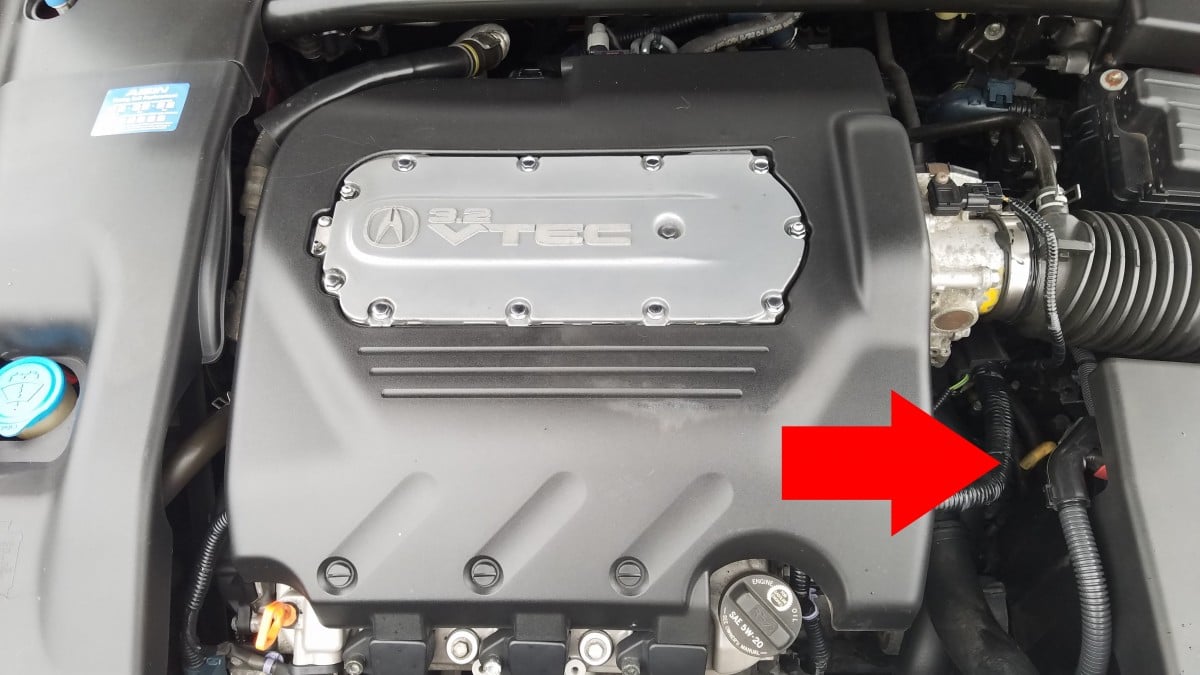
When the transmission fluid level is low, you will experience symptoms such as transmission slipping, no shift, jerking between gears, or even a burning smell.
If your Acura is stuck in gear or you notice a shift delay, you must first check the transmission fluid level.
Do not drive an Acura with low transmission fluid. Driving with low transmission fluid damages the transmission.
- Remove the transmission dipstick and ensure there is transmission fluid. Do not continue with the next steps if there is no transmission fluid. Transmission fluid level should only be measured when the transmission oil is warm to get an accurate level reading.
- Drive your Acura around for at least fifteen minutes. If necessary, ensure to shift the transmission between all the gears manually. This will allow your Acura transmission fluid to reach operating temperature.
- Remove the transmission dipstick and determine the fluid level. If the transmission fluid level is low, add trans fluid until you bring the level between the minimum and maximum marks on the dipstick. You can purchase one from the dealer if your Acura has no dipstick. Or check online for Acura Transmission Dipstick on eBay.
- Add transmission fluid. Only use the recommended Acura or Honda transmission fluid. Using any transmission oil can cause damage to the transmission.
A transmission fluid dipstick may not be available for transmissions in which the level is measured via the transmission plug.
How to Diagnose Acura Transmission Problems?
The first sign that you may have transmission problems is that the check engine light (CEL) comes on.
You can use a generic OBD-II scanner to retrieve CEL faults, but those codes will not be as helpful as those stored in the Powertrain Control Module (PCM), also known as the transmission control unit.
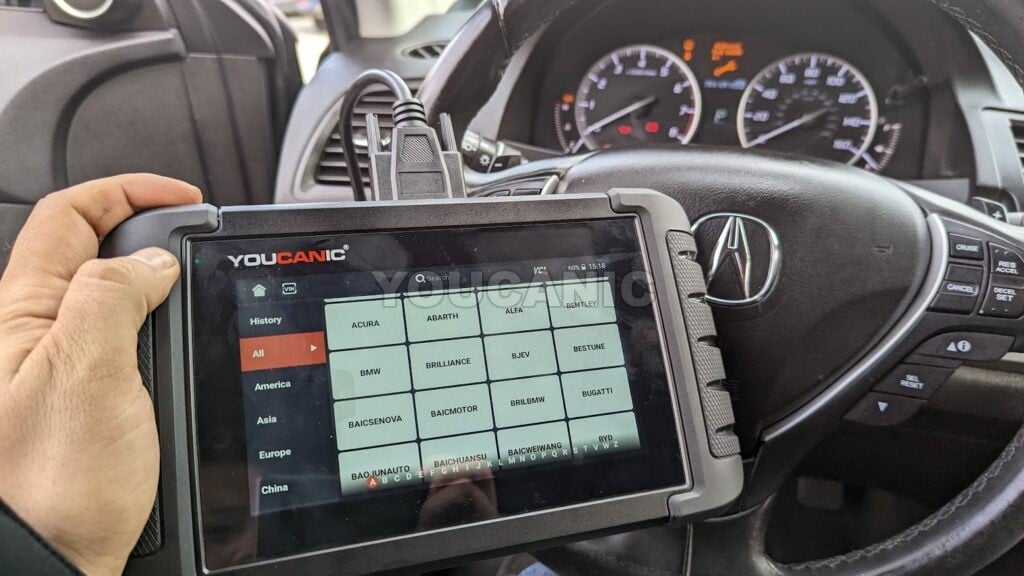
An OBD-II scanner, like the YOUCANIC Full System Scanner, that works on Acura will read fault codes from the PCM module. To diagnose Acura transmission problems, it is recommended to use an OBD2 scanner for Acura Honda Transmission. Locate the diagnostic port under the dashboard on the driver’s side. This is a 16-pin port. All 1996 and newer ACURA vehicles have this port.
- Plug your handheld scanner or Bluetooth adapter into the OBD2 port.

- Turn the key to position II. All the dashboard lights will turn on. Do not start the vehicle. If your ACURA has a Start/Stop button, you must press the Start button without pressing the brakes.

- Allow the OBD2 scanner to turn on and connect to your ACURA Engine Control Unit (ECU).

- Read fault codes from the Transmission Control Unit. Write down the fault code and research to discover more about the problem and possible solutions. Once the problem is fixed, you can go to the Transmission menu > Erase Codes to reset the transmission fault codes.
Common Acura Transmission Problems
Let’s take a look at common Acura transmission problems.
Shudder and Vibrations when driving.
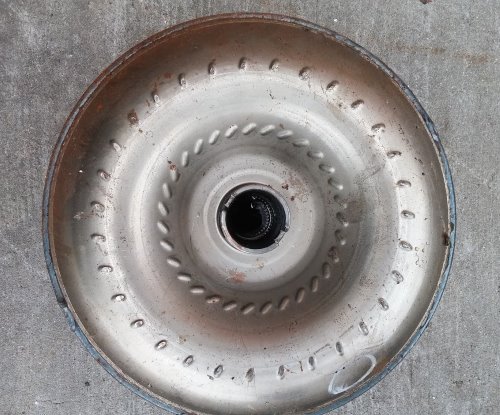
A common problem that affects many Acura (such as TL and MDX) is transmission shudder and vibrations when driving. The vibrations can be most felt at highway driving speeds. This problem may be corrected by updating the automatic transmission software, which has to be completed by the dealer.
Call the Acura dealer to provide them with your VIN and ask if a Powertrain Control Module (PCM) software update is available. If a software update does not fix the shudder, there is a good chance you have a bad torque convert that needs replacing.
The transmission must be removed to replace the torque converter, making this repair expensive. This is not an easy DIY fix that you can perform on your driveway. The typical cost to change the torque converter is $1800-$3000.
Check Engine Light
Suppose the check engine light and D4 or D5 indicator on the dashboard on your instrument cluster may flash. Sometimes, you may even hear a loud noise from the transmission. When this happens, your Acura transmission will delay shifting between gears in upshifting and downshifting.
To fix this problem often, a new torque converter is needed. Honda extended the warranty to fix this problem, but older Acuras now fall outside the warranty period. Read the fault codes from the Engine Control Unit. Read fault codes via the OBD2 port under the dashboard using an OBD2 scanner.
Related codes: P0700, P0730, P0740, P0780, P1768
Worn Clutch Pack

Another problem affecting some Acuras is that the 3rd gear clutch pack may wear prematurely. If this happens, you may have issues upshifting or downshifting in 3rd gear. Typical problems include flaring, slipping, or shifting to third gear. Check engine light (CEL / MIL) and gear D5 may also be flashing.
To fix this problem, overhaul the transmission and replace the 3rd gear clutch. A defective valve body can also cause similar symptoms.
Solenoids and Sensors on Valve Body
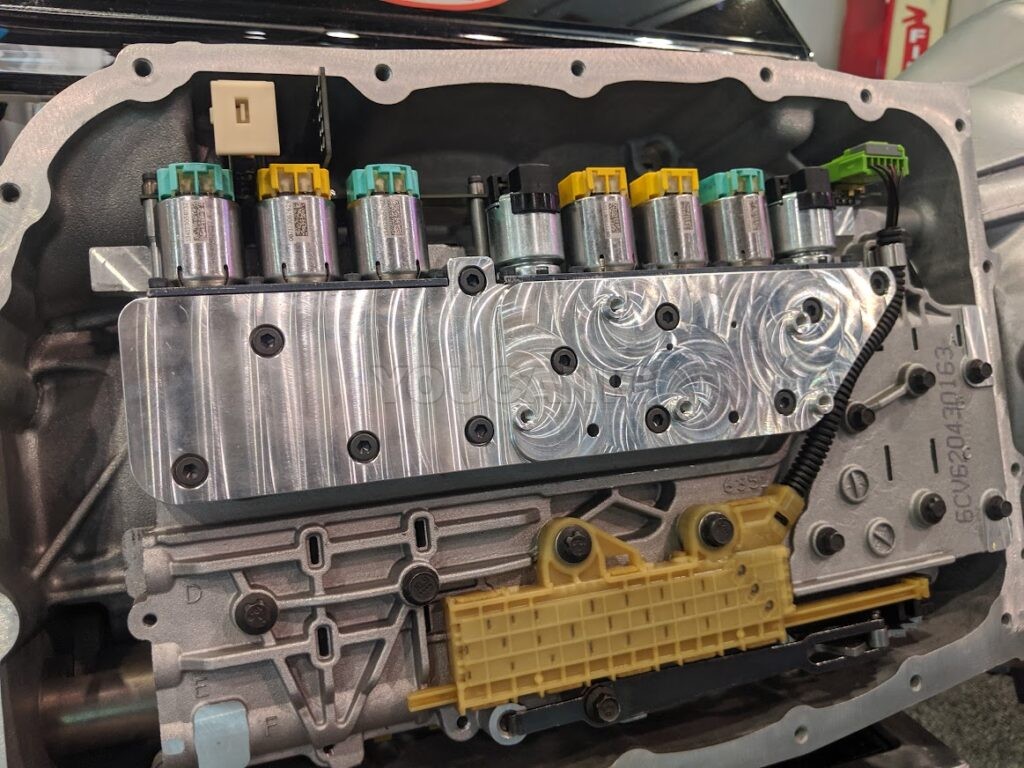
Multiple solenoids are mounted on the valve body of the Acura transmission.
Due to age, these solenoids can fail or get sticky, causing erratic shifting. Sensors mounted on the valve body can get dirty or stop working if there is a short in the wire harness.
It is possible to overhaul the valve body instead of replacing it. Valve body repair kits are available and less expensive than replacing the whole valve body.
Shift Stuck In Park

It can be scary if your Acura shifter won’t move out of park. Not only are you stuck in a parking lot or garage, but now you are worried about an expensive car repair. A bad brake light switch typically causes the problem, or the ignition switch is not releasing the shifter from the park.
As a temporary solution, manually override the transmission and move the shifter in Drive. Next to the shifter, you will notice a small plastic cover that says Shifter Unlock. Use a small object, such as a flat screwdriver or pen, to remove the cover. Insert the screwdriver into the hole and move the shifter from Park to Drive.
Recommended Acura Transmission Fluid
Below is a list of the most used Acura transmission fluid and applicable vehicles. The following is for information only. The correct fluid for your Acura is listed in your owner’s manual.
- Honda ATF-Type 3.1 082009006 CVT
- Acura ILX 2013-2014 Hybrid; L4; 1.5L; LEA2 Eng.
- Honda CR-Z 2011-2016
- Honda Insight 2000-2014
- Honda Civic 1996-2014
- Acura Transmission Fluid 08200 9008
- 1997-2003 Acura CL
- 1986-2001 Acura Integra
- 1986-1995 Acura Legend
- 2001-2011 Acura MDX
- 1991-2005 Acura NSX
- 2007-2011 Acura RDX
- 1996-2010 Acura RL
- 2002-2006 Acura RSX
- 1996-1999 Acura SLX
- 1995-2011 Acura TL
- 2004-2011 Acura TSX
- 1992-1994 Acura Vigor
- Honda AA01 500 001 ZF Transmission
Recalls
Over the years, Acura has issued multiple recalls for automatic transmission. Call your Acura dealer and provide them with the VIN. Ask if there are any recalls on your car. If there are, the dealer may fix your Acura free of charge.
List of previous Acura recalls and service bulletins.
- TSB 12-029
- A judder from the torque converter lock-up clutch may be felt while driving between 20-45 mph.
- A software update for the transmission is available to minimize the opportunity for the judder.
- TSB 03-002
- No upshifts or downshifts, Slippage or flaring on upshifts or downshifts (primarily in 3rd gear), Erratic or excessively harsh shifts, Slow or delayed gear engagement.
- The MIL is on, and/or the D5 indicator is flashing.
- TSB 02-027
- While driving, the D4 indicator (1999 3.2TL) or D5 indicator (all other models) on the instrument panel flashes. An abnormally loud noise from the transmission.
- Extremely slow or delayed gear engagement, upshifts, or downshifts. Abnormal gear slippage during upshifts or downshifts. Erratic or excessively harsh shifting. Automatic transmission fluid (ATF) leaks.
We hope you find the Troubleshooting Acura Transmission Problem guide helpful. Check these troubleshooting and repair guides for more help on your Acura vehicle.



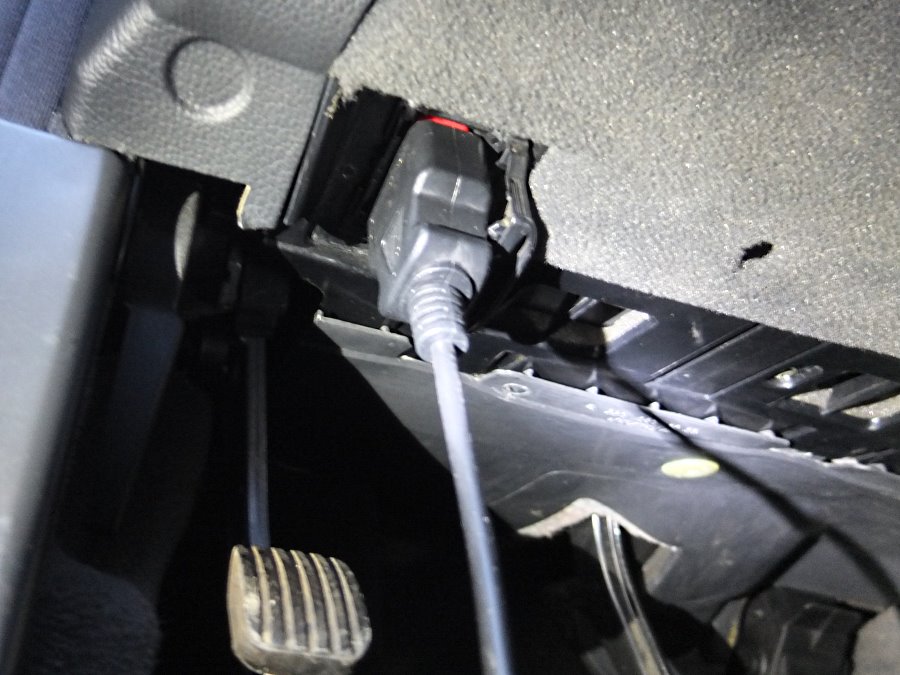
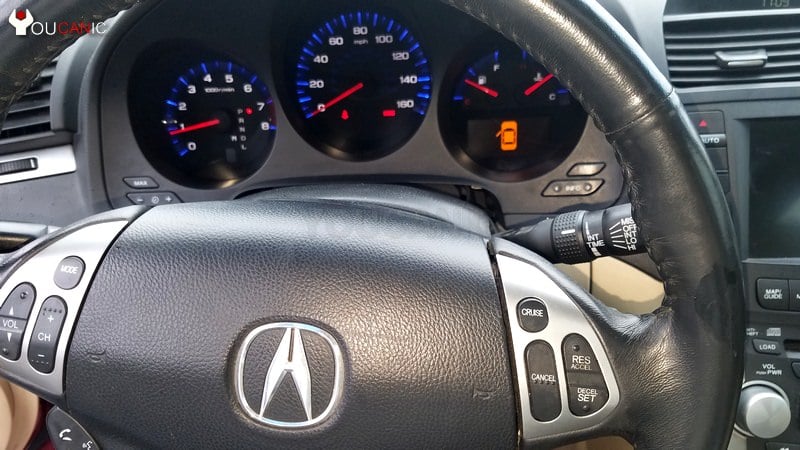
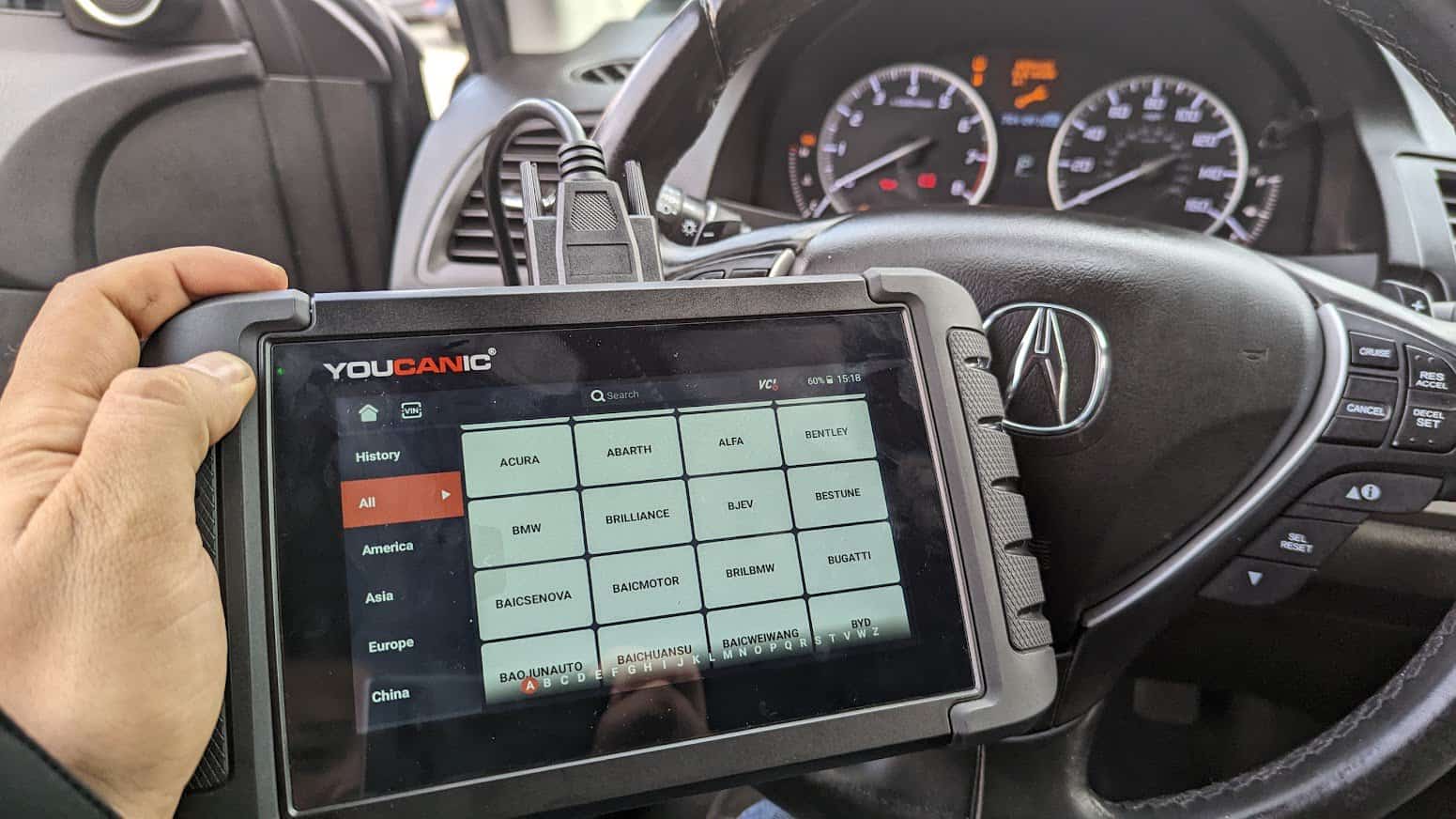





(No subject)
I was wondering if my Acura 2005 I bought a used from a person I wanted to see if my transmission has any warranty or any recalls because he gave up on me. Does my vehicle qualifies for this warranty if I bought it you get in touch with me as soon as possible I need my vehicle fixed
I have a 2006 RL and it was giving me a Check trans code. I looked it up and it said change trans Fluid. I did that but before the fluid change it ran very well. Still runs good but the check trans code is still on but trans works fine. Now I have a wrench code. 174, 000 miles but everything works? Any Ideas?
Having the same problem with my car that i recently purchased. Have you found a solution yet?
I was stuck in Acura for using a 1/2 gear ,what can I do
Did you get any response I’m having the same problem think mine is ecu but nobody can tell me and dont want to spend money I don’t have to
Hello, i have an acura tl 2006 fwd, i was driving the car normally without any problems, first it started a couple of months back, when i start the car and due to the cold i do not warm it, when i shift to drive it takes a second or two then the drive works, yesterday i was driving normal and my gear box started slipping out of nowhere, when i turn off the car and start it again it works, can i have some advice is it the gear box who’s dead or since i never changed the transmission oil and filters it’s doing that. Thanks
Wow. To the writer of this, THANK YOU!
1996 Acura NSX 4at transmission, coming home the paddle shifts quit working and in drive the car will only go in 2dn and 4th gear. Even if you manually try to shift only second and forth.
Thank you for this site!!